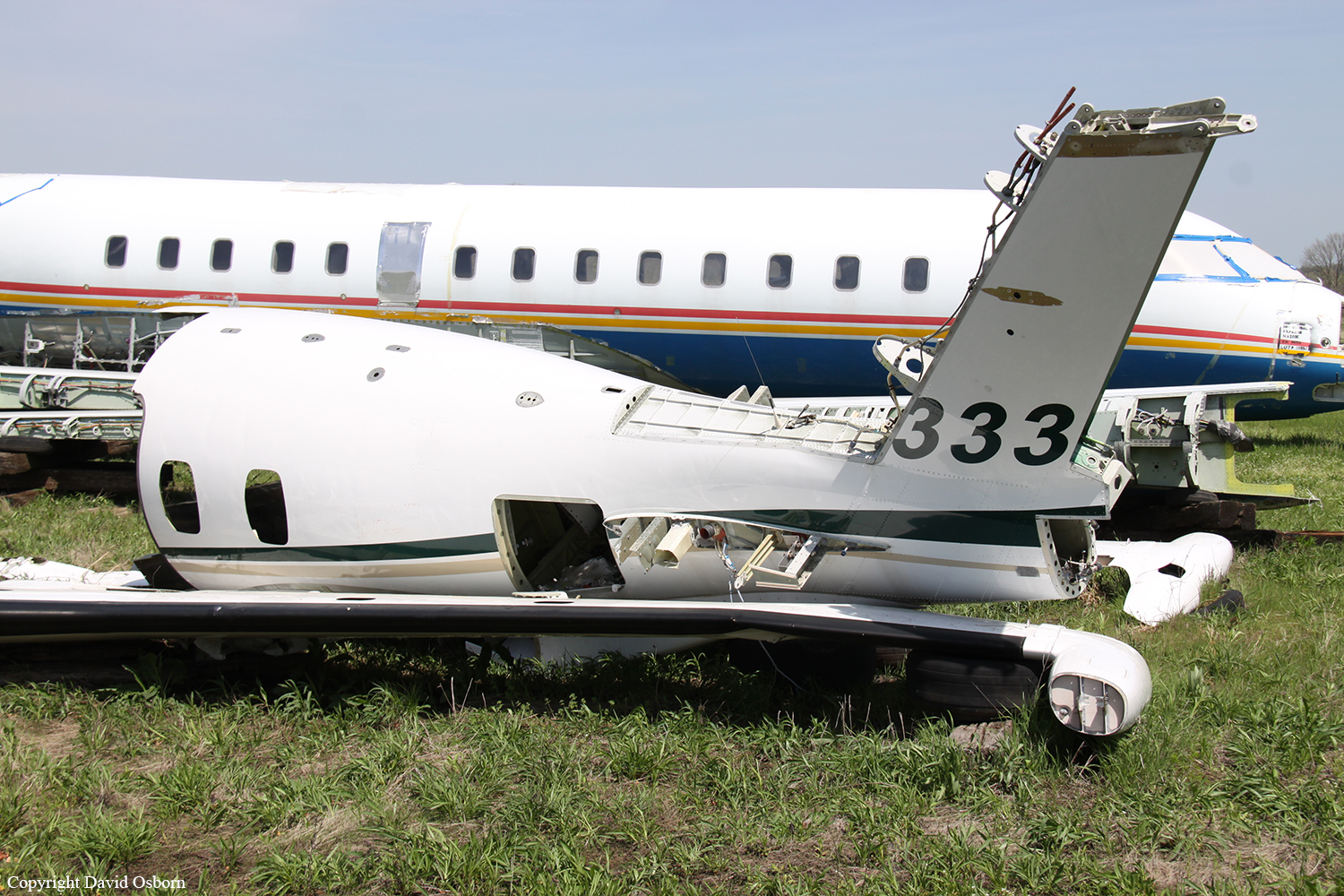Country
Crash of an Eclipse EA500 near Swellendam: 1 killed
Date & Time:
Dec 7, 2015 at 1057 LT
Registration:
ZS-DKS
Survivors:
No
Schedule:
Lanseria - Cape Town
MSN:
142
YOM:
2008
Crew on board:
1
Crew fatalities:
Pax on board:
0
Pax fatalities:
Other fatalities:
Total fatalities:
1
Captain / Total hours on type:
506.00
Aircraft flight hours:
714
Circumstances:
The aircraft had taken off on a private flight with the pilot being the sole occupant on board. The pilot had filed an IFR flight plan and had informed air traffic control (ATC) at FALA that the aircraft had a fuel endurance of 4 hours and his estimated flying time to FACT was approximately 2 hours and 30 minutes. After take-off the aircraft climbed to its cruising altitude of 36 000 feet (FL360) as was seen on the radar recordings. The pilot maintained communication with ATC until overhead Kimberley. Shortly thereafter the aircraft was observed to change course, turning slightly left before the town of Douglas. The aircraft remained at FL360 and was observed to fly south towards the waypoint OKTED, which was a substantial distance to the east of FACT. FACT could not get communication with the aircraft and the aeronautical rescue co-ordination centre (ARCC) was advised of the situation. The aircraft was kept under constant radar surveillance. The ARCC requested assistance from the South African Air Force (SAAF) and a Gripen (military jet) from Air Force Base Overberg (FAOB) was dispatched to intercept the aircraft. The pilot of the Gripen intercepted the aircraft approximately 3 minutes before it impacted the terrain. The Gripen pilot was unable to get close enough to the aircraft as it was flying very erratically, and he could therefore not see whether the pilot was conscious or not. The aircraft was observed entering a left spiral and continue spiraling down until it impacted the ground. The pilot was fatally injured and the aircraft was destroyed during the impact sequence.
Probable cause:
The investigation revealed no anomalies on the part of the aircraft and all damage was attributed to the impact with the ground. The fatal injuries sustained by the pilot made it impossible to determine if the pilot was incapacitated or not. It was observed that the aircraft performed a series of unexplainable as well as erratic flying manoeuvres, which resulted in a loss of control and the aircraft to enter into a spiral dive, which was observed by the Gripen pilot before colliding with the ground.
Final Report:







Crash of an Eclipse EA500 in Danbury
Date & Time:
Aug 21, 2015 at 1420 LT
Registration:
N120EA
Survivors:
Yes
Schedule:
Oshkosh – Danbury
MSN:
199
YOM:
2008
Crew on board:
1
Crew fatalities:
Pax on board:
2
Pax fatalities:
Other fatalities:
Total fatalities:
0
Captain / Total hours on type:
1111.00
Aircraft flight hours:
858
Circumstances:
**This report was modified on April 2, 2020. Please see the public docket for this accident to view the original report.**
After the airplane touched down on the 4,422-ft-long runway, the airline transport pilot applied the brakes to decelerate; however, he did not think that the brakes were operating. He continued "pumping the brakes" and considered conducting a go-around; however, there was insufficient remaining runway to do so. The airplane subsequently continued off the end of the runway, impacted a berm, and came to rest upright, which resulted in substantial damage to the right wing. During postaccident examination of the airplane, brake pressure was obtained on both sets of brake pedals when they were depressed, and there was no bleed down or reduction in pedal firmness when the brakes were pumped several times. Examination revealed no evidence off any preimpact anomalies with the brake system that would have precluded normal operation. In addition, the pilot indicated that he was not aware of and was not trained on the use of the ALL INTERRUPT button, which is listed as a step in the Emergency Procedures section of the airplane flight manual and is used to disable the anti-skid brake system functions and restore normal braking when the brakes are ineffective; thus, the pilot did not follow proper checklist procedures. According to data downloaded from the airplane's diagnostic storage unit (DSU), the airplane touched down 1,280 ft beyond the runway threshold, which resulted in 2,408 ft of runway remaining (the runway had a displaced threshold of 734 ft) and that it traveled 2,600 ft before coming to rest about 200 ft past the runway. The airplane's touchdown speed was about 91 knots. Comparing DSU data from previous downloaded flights revealed that the airplane's calculated deceleration rate during the accident landing was indicative of braking performance as well as or better than the previous landings. Estimated landing distance calculations revealed that the airplane required about 3,063 ft when crossing the threshold at 50 ft above ground level. The target touchdown speed was 76 knots. However, the airplane touched down with only 2,408 ft of remaining runway faster than the target touchdown speed, which resulted in the runway overrun.
After the airplane touched down on the 4,422-ft-long runway, the airline transport pilot applied the brakes to decelerate; however, he did not think that the brakes were operating. He continued "pumping the brakes" and considered conducting a go-around; however, there was insufficient remaining runway to do so. The airplane subsequently continued off the end of the runway, impacted a berm, and came to rest upright, which resulted in substantial damage to the right wing. During postaccident examination of the airplane, brake pressure was obtained on both sets of brake pedals when they were depressed, and there was no bleed down or reduction in pedal firmness when the brakes were pumped several times. Examination revealed no evidence off any preimpact anomalies with the brake system that would have precluded normal operation. In addition, the pilot indicated that he was not aware of and was not trained on the use of the ALL INTERRUPT button, which is listed as a step in the Emergency Procedures section of the airplane flight manual and is used to disable the anti-skid brake system functions and restore normal braking when the brakes are ineffective; thus, the pilot did not follow proper checklist procedures. According to data downloaded from the airplane's diagnostic storage unit (DSU), the airplane touched down 1,280 ft beyond the runway threshold, which resulted in 2,408 ft of runway remaining (the runway had a displaced threshold of 734 ft) and that it traveled 2,600 ft before coming to rest about 200 ft past the runway. The airplane's touchdown speed was about 91 knots. Comparing DSU data from previous downloaded flights revealed that the airplane's calculated deceleration rate during the accident landing was indicative of braking performance as well as or better than the previous landings. Estimated landing distance calculations revealed that the airplane required about 3,063 ft when crossing the threshold at 50 ft above ground level. The target touchdown speed was 76 knots. However, the airplane touched down with only 2,408 ft of remaining runway faster than the target touchdown speed, which resulted in the runway overrun.
Probable cause:
The pilot's failure to attain the proper touchdown point and exceedance of the target touchdown speed, which resulted in a runway overrun.
Final Report:
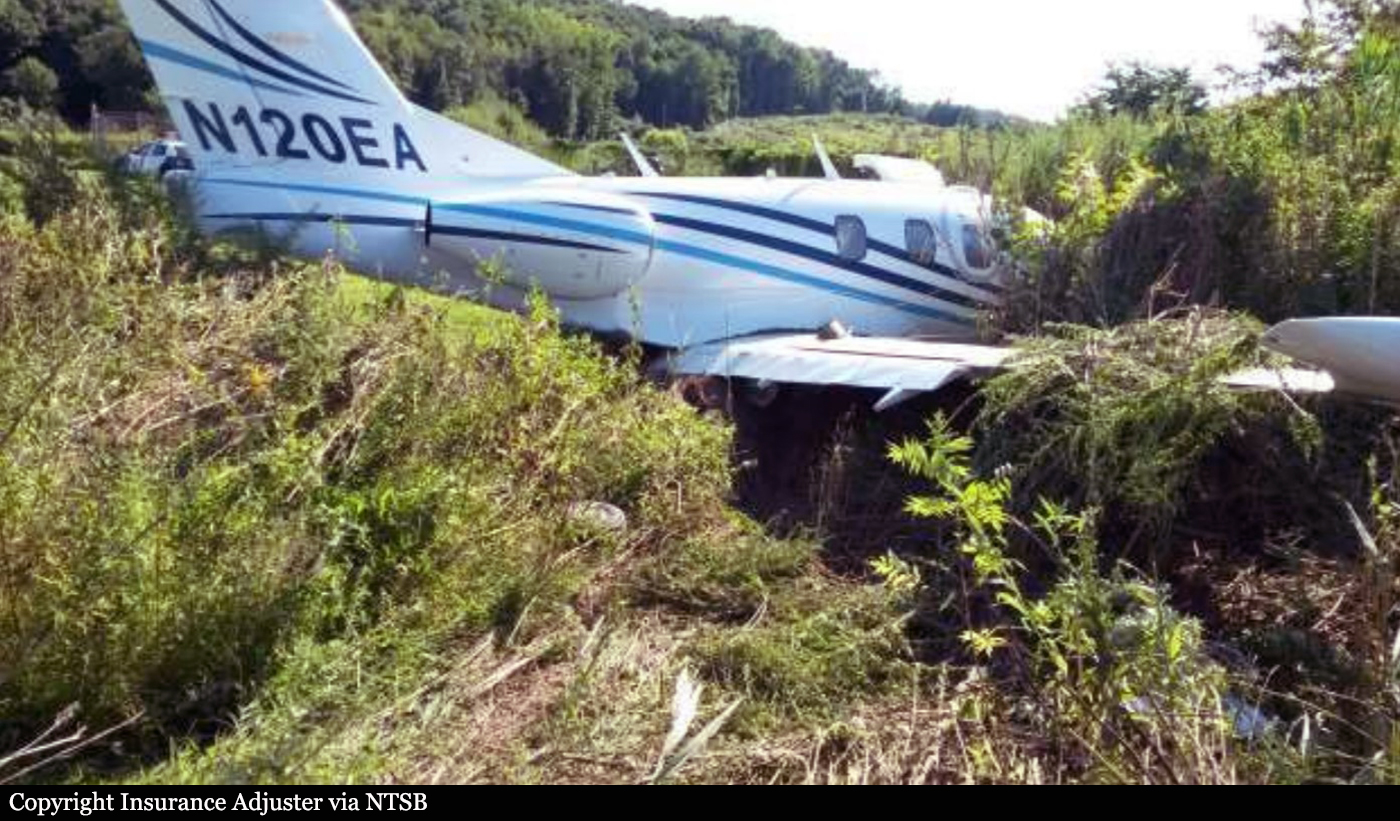
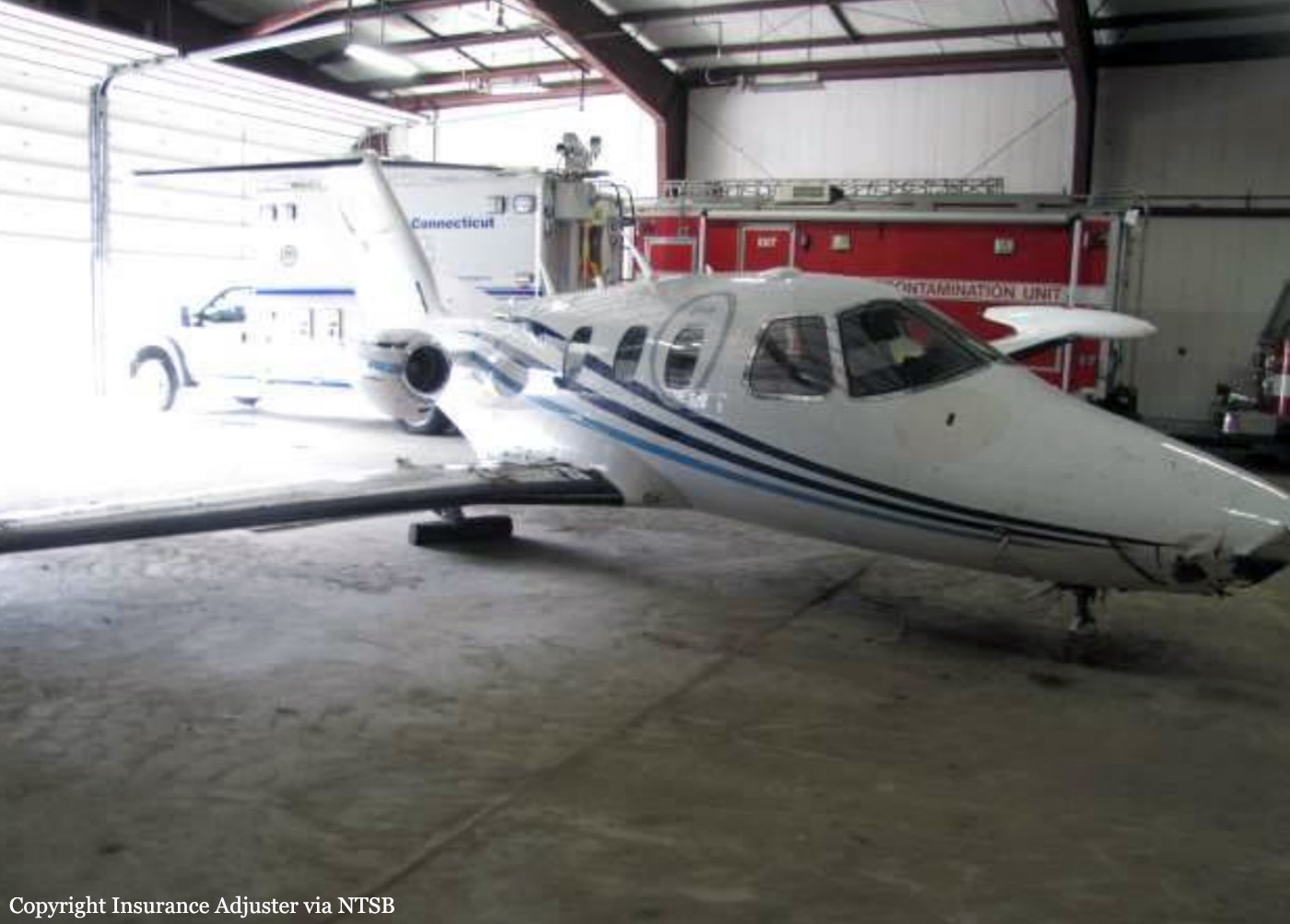

Crash of an Eclipse EA500 in Nome
Date & Time:
Jun 1, 2011 at 2140 LT
Registration:
N168TT
Survivors:
Yes
Schedule:
Anadyr – Nome
MSN:
42
YOM:
2007
Crew on board:
1
Crew fatalities:
Pax on board:
1
Pax fatalities:
Other fatalities:
Total fatalities:
0
Captain / Total hours on type:
205.00
Aircraft flight hours:
343
Circumstances:
The pilot indicated that, prior to the accident flight, the wing flaps had failed, but he decided to proceed with the flight contrary to the Airplane Flight Manual guidance. While conducting a no-flap approach to the airport, he decided that his airspeed was too fast to land, and he initiated a go-around. During the go-around, the airplane continued to descend, and the fuselage struck the runway. The pilot was able to complete the go-around, and realized that he had not extended the landing gear. He lowered the landing gear, and landed the airplane uneventfully. He elected to remain overnight at the airport due to fatigue. The next day, he decided to test fly the airplane. During the takeoff roll, the airplane had a severe vibration, and he aborted the takeoff. During a subsequent inspection, an aviation mechanic discovered that the center wing carry-through cracked when the belly skid pad deflected up into a stringer during the gear-up landing.
Probable cause:
The pilot landed without lowering the landing gear. Contributing to the accident was the pilot's decision to fly the airplane with an inoperative wing flap system.
Final Report:
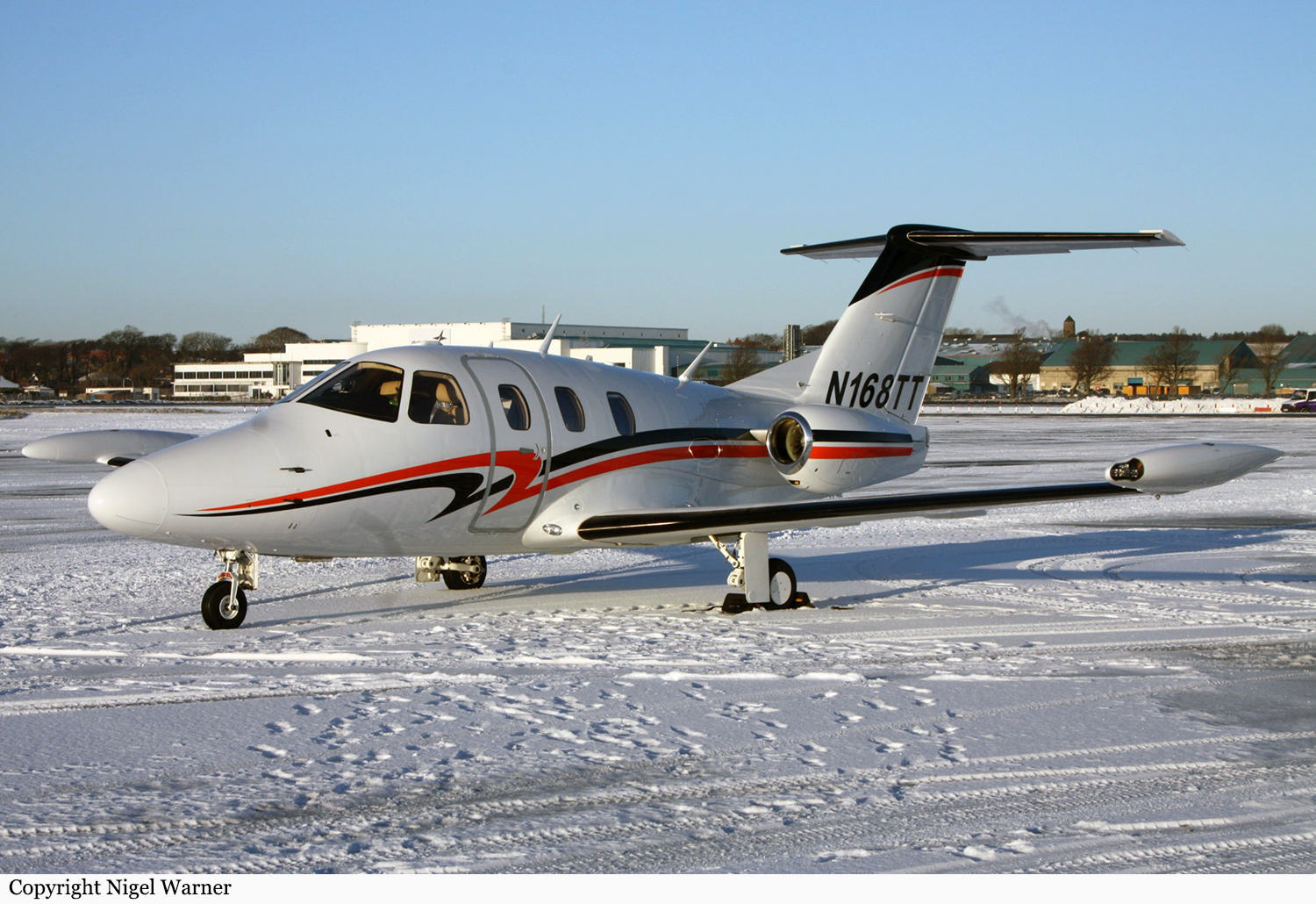
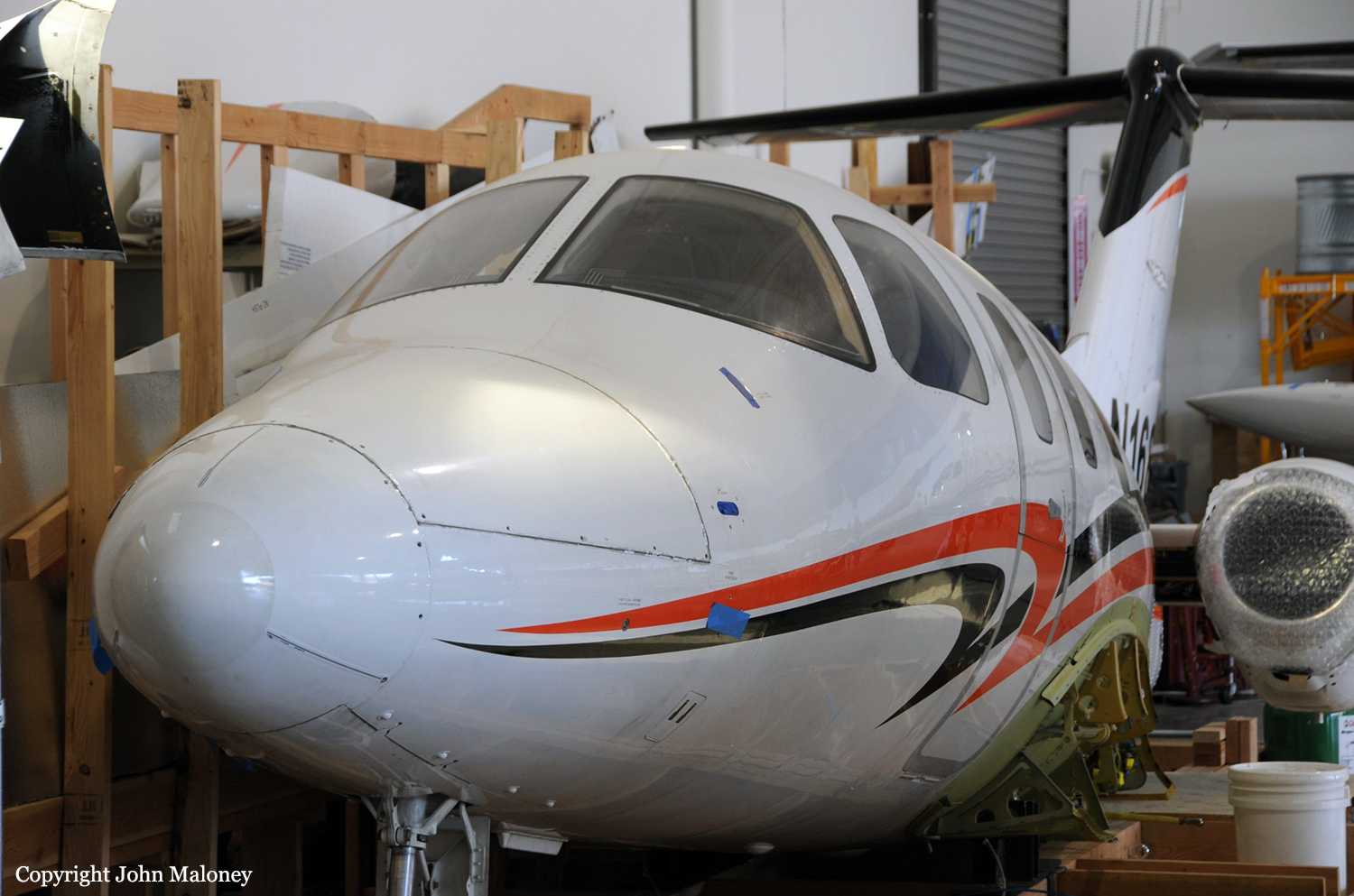
Crash of an Eclipse EA500 in West Chester
Date & Time:
Jul 30, 2008 at 1830 LT
Registration:
N333MY
Survivors:
Yes
Schedule:
Philadelphia - West Chester
MSN:
113
YOM:
2007
Crew on board:
1
Crew fatalities:
Pax on board:
1
Pax fatalities:
Other fatalities:
Total fatalities:
0
Captain / Total hours on type:
93.00
Aircraft flight hours:
98
Circumstances:
During landing at its home airport, the airplane overran the runway and traveled down a 40-foot embankment before coming to rest against trees and sustaining substantial damage. According to the pilot, his speed on approach was a little fast but he thought it was manageable. Recorded data from the accident airplane revealed that 20 seconds before touchdown, when the pilot selected flaps 30 (landing flaps) the airspeed was approximately 27 knots above the maximum flap extension speed, and as the airplane touched down its airspeed was approximately 14 knots higher than specified for landing. The runway had a displaced threshold with 3,097 feet of runway length available. Skid marks from the accident airplane began approximately 868 feet beyond the displaced threshold, and continued for about 2,229 feet until they left the paved portion of the runway.
Probable cause:
The pilot's failure to obtain the proper touchdown point, and his excessive airspeed on approach.
Final Report:


